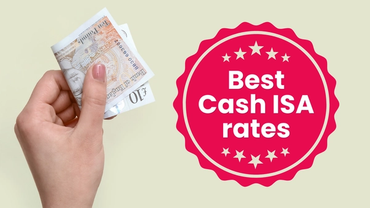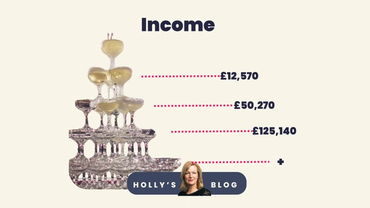Multi-Asset Funds Explained: Smart, Diversified Investing Made Simple
The basics of multi-asset funds
Just like a football team needs more than just strikers, a well-balanced investment portfolio needs more than just tech stocks. Enter multi-asset funds: the investing equivalent of building a team with solid defenders, midfielders and forwards. You don’t want to rely on one superstar and get knocked out when markets wobble.
A multi-asset fund is a type of fund which invests in a range of different assets - for example, shares, bonds, cash, foreign currency and property are all different assets. So a multi-asset fund might contain some shares, some bonds and a bit of cash too - all rolled up in a single investment product.
This makes them a great way of getting exposure to lots of different types of assets in one fell swoop. This process is called "diversification" and is a key principle followed by investors around the world - amateur and professional alike. A multi-asset fund helps you diversify without having to research, pick and manage dozens of separate investments all by yourself.
Listen to our Founder and CEO Holly Mackay explain more about how they work in the clip below:
Are multi-asset funds right for me?
The pros of multi-asset funds
✅ Diversification made easy
Instead of needing to research and purchase dozens (or even hundreds) of individual shares, bonds or other investment assets, a multi-asset fund gives you exposure all wrapped up in one single product. The key benefit here is reduced risk: if one asset class underperforms (say, your shares take a hit), others like bonds or property may hold up better. That offsetting power helps smooth out any bumps and makes your portfolio more resilient over the long run.
✅ Set it and forget it
Multi-asset funds are typically built to run in the background. Whether you choose an actively managed fund (where a fund manager supervises and adjusts the underlying holdings) or a passive one (which tracks a predefined sector or index), most are regularly rebalanced to keep the fund aligned with its stated objectives. That means you don’t need to worry about shifting your allocations or reacting to market news. For hands-off investors or anyone without the time (or inclination) to spend an age managing their portfolio, that’s a major plus.
✅ Good for long-term investing
Many multi-asset funds are built with the long haul in mind. Their mix of asset classes aims to deliver steadier growth over time - not like the wild ups and downs you might get from investing in just shares or crypto. This makes them well-suited to longer-term financial goals like saving for retirement. Plus, if held inside a Stocks & Shares ISA or pension, they can grow tax-free and basically be left alone to do their thing - making them a smart, low-effort option for long-term savers.
The cons of multi-asset funds
❌ Less personalisation
When you invest in a multi-asset fund, you’re handing the decision-making over to the fund manager (or index rules, if it’s passive). That means you won’t get to hand-pick sectors, regions or individual companies yourself. If you have strong views on sustainable investing, for example, you might find the fund’s underlying holdings don’t fully align with your values or strategy.
❌ Capped upside in strong markets
Because these funds are typically designed to smooth out volatility, some include a chunk of lower-risk assets like bonds or cash to minimise risk. That helps protect your portfolio in downturns, but it also means your returns might lag behind in bull markets - especially if shares are soaring and the fund’s exposure is limited.
❌ Charges can vary widely
Not all multi-asset funds are created equal when it comes to cost. Passive versions can be good value, with management fees as low as 0.2-0.4% a year. But actively managed funds may charge 1% or more - and that’s before any investment platform fees are added on top. These fees can quietly chip away at your long-term gains. Always check the ongoing charges figure (OCF) and consider whether you're comfortable with the price tag.
Top questions on multi-asset funds
Are multi-asset funds good for beginners?
Yes. Multi-asset funds are often recommended for new or less confident investors because they offer instant diversification, are easy to understand, and don’t require much day-to-day admin. You don’t need to know the ins and outs of bonds vs equities - the fund handles the research and analysis for you.
What’s the difference between a multi-asset fund and a ready-made portfolio?
In simple terms, a multi-asset fund is a single fund that holds a variety of assets. A ready-made portfolio, on the other hand, is usually a bigger bundle of different funds (often including multi-asset funds). They're typically made up of a blend of shares and bonds in different proportions to match a certain level of risk appetite. Think of the fund as one dish and the portfolio as the whole buffet.
Multi-asset fund | Ready-made portfolio |
A single fund that provides exposure to multiple assets within one product – for example, bonds, shares and commodities. | A type of multi-asset fund which provides a blend of bond and equity exposure depending on your tolerance for risk. |
Should I choose an active or passive multi-asset fund?
This one really depends on your preferences. Passive multi-asset funds are usually cheaper and track the market, while active multi-asset funds are managed by professionals who try to spot the winners and beat it. Active funds may add value, but not all do - and they typically come with higher fees.
If you're considering an active multi-asset fund, it's a good idea to check its past performance (though not a guarantee of future results!) and associated costs before deciding. You may conclude that it's better value for you to opt for a passive fund which is likely to deliver similar results at a lower cost.
Do multi-asset funds pay an income?
Some do, yes. Look for income or “distribution” versions (usually labelled “Inc” or “Income” in the name). These multi-asset funds will pay out dividends or interest from cash holdings to investors on a regular basis. If you’d rather skip the cash and reinvest those payments for future growth, go for an “Acc” (accumulation) version.
Can I hold a multi-asset fund alongside other investments?
Absolutely. You might use a multi-asset fund as your core holding and add other funds or assets around it for a more nuanced, tailored investment strategy. Just be careful not to accidentally double up on exposure. For example, holding lots of global equity ETFs on top of an equity-heavy multi-asset fund might cause you to be invested in the same asset - e.g. Microsoft shares - in multiple instances, which could dilute any attempts to diversify your overall portfolio.
Key takeaways on multi-asset funds
🎨 All-in-one route to diversification
Multi-asset funds bundle together a mix of assets, like shares, bonds and property, giving you an instant spread and helping smooth out returns without needing to build a complex, multi-dimensional portfolio all by yourself.
👐 Great for hands-off investing
Whether you’re a beginner or just don’t have the time to manage and monitor hundreds of individual investments, a multi-asset fund does the heavy lifting by giving you an all-in-one product designed for the long-term.
🚫 Not a one-size-fits-all solution
They're not tailored to your unique financial needs and goals, so you may not be able to build the perfect portfolio with just a single multi-asset fund. However, for many investors, the convenience and instant diversification make them a solid addition - especially when used inside an ISA or pension wrapper for tax-free growth.



